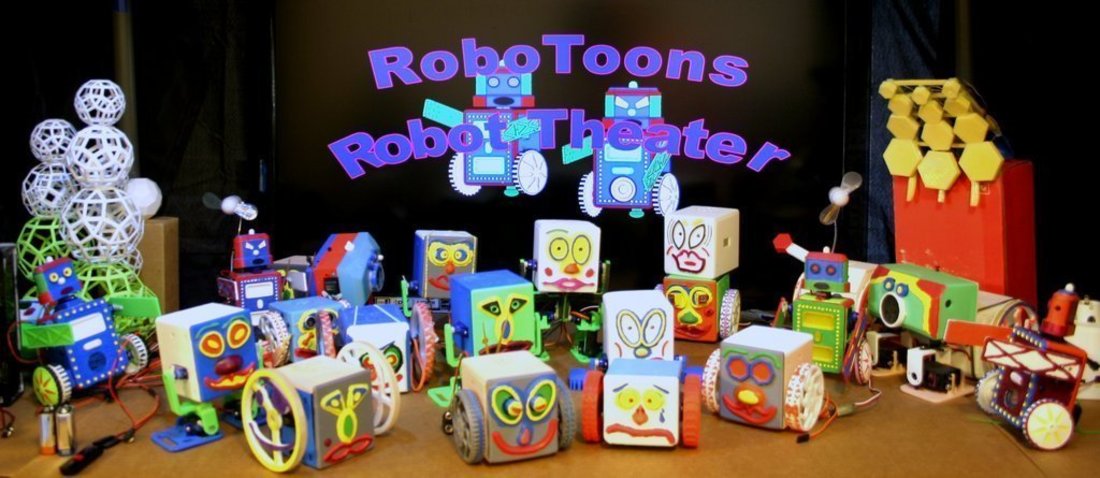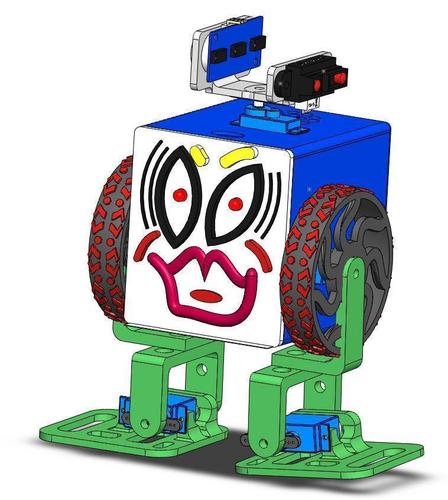

Prints (0)
-
No Prints Yet
Be the first to upload a Print for this Design!
Description
miniFloppyBot is designed for the RoboGuts™ circuit board ... an Arduino might fit to do the same work, but the RoboGuts™ circuit board crams much more functionality into the same space!
The fastest and cheapest way to get all my .STL files FREE is to donate $5 to help fund school materials ... once I have $3,500 I'll convert all these files to FREE downloads. https://www.gofundme.com/roboguts-kits-lessons
The miniFloppyBot is the starter projects for the "RoboGuts™ S.T.E.A.M. education program where teachers only help students find answers and solve problems" as the students learn the manufacturing process. The kit's I've been designing for elementary and middle school classrooms. The students begin their lessons by having the class 3D printer begin printing miniFloppyBot bodies, tops, wheels and faces. Then students start learning with the RoboGuts™ circuit board some basic electronics. Learning about polarity, basic color codes and a few types of components. The student learns how to add a micro controller chip (MCU) and different devices, LEDs, peripherals and motors one at a time making the appropriate jumpers on the RoboGuts™ circuit board adding jumper wires to complete the circuit design by following the example wiring diagrams on the website (http://www.r2pv1.com/PICAXE28X2m/), then after clicking on the jumper wire diagram the student enters the programming mode. In programming mode the BASIC language program listing for the current lesson is displayed ready to be copy/pasted into the chip being used programming editor. The student then programs the chip/module to run the lesson demo. Now the student can begin experimenting by altering the programming code to help them better learn and understand structured programming and how the code works. Finally after working on the beginner lessons and listening the the 3D printer printing out the kit parts for the class, the user is ready to tackle end projects ... this is where the miniFloppyBots and BillyBot robot kits become fun talking 'n singing (in any language) toys the children have actually made themselves! That's the goal of this S.T.E.A.M. education program, to learn the entire manufacturing process starting with the most simple steps then experimenting and expanding to more advanced lessons simply because of the incentive to explore their own creativity. I can only hope the schools will begin to give pre-schools professional 3D CAD/Modeling software to learn how to draw and color and begin to build their 3D modeling and math skills. Print Settings Printer: non sponsored printer Rafts: No Supports: No Notes: These parts are designed to print on almost any cheap 3D plastic printer and still easily fit and snap together sans gluing, bolts or rivets. The one caveat to these projects is the screws needed to attach the motors to the robot bodies, the screws needed to attach the 3D printed wheels to servo horns that also have a screw to attach the wheel to the motor. This may require some adult assistance. I also use a small dab of Gorilla glue on each end of the servo horn to fuse the servo horns to the wheels. I don't bolt down the RoboGuts circuit board or batteries, they just get stacked into the miniFloppyBot body using a small cardboard square at most for separation. Best printed with the body back down, the large thin flat on the bottom of the face down, the top of the top down. Post-Printing
Basic miniFloppyBot Assembly The inner cavity allows for batteries, the RoboGuts circuit board built-up and a speaker installed into the lid. The two side rectangle cuts are for miniServo motors that can be standard or continuous rotating depending upon the project being built. BoneHead sings
The Saga of Watt and Hu two 3D Printed Robots As I learn how to write comedy, I continue to make little videos hoping one of them eventually goes viral confirming my comedy scripting skills ... so far that hasn't proven very successful.
Comments